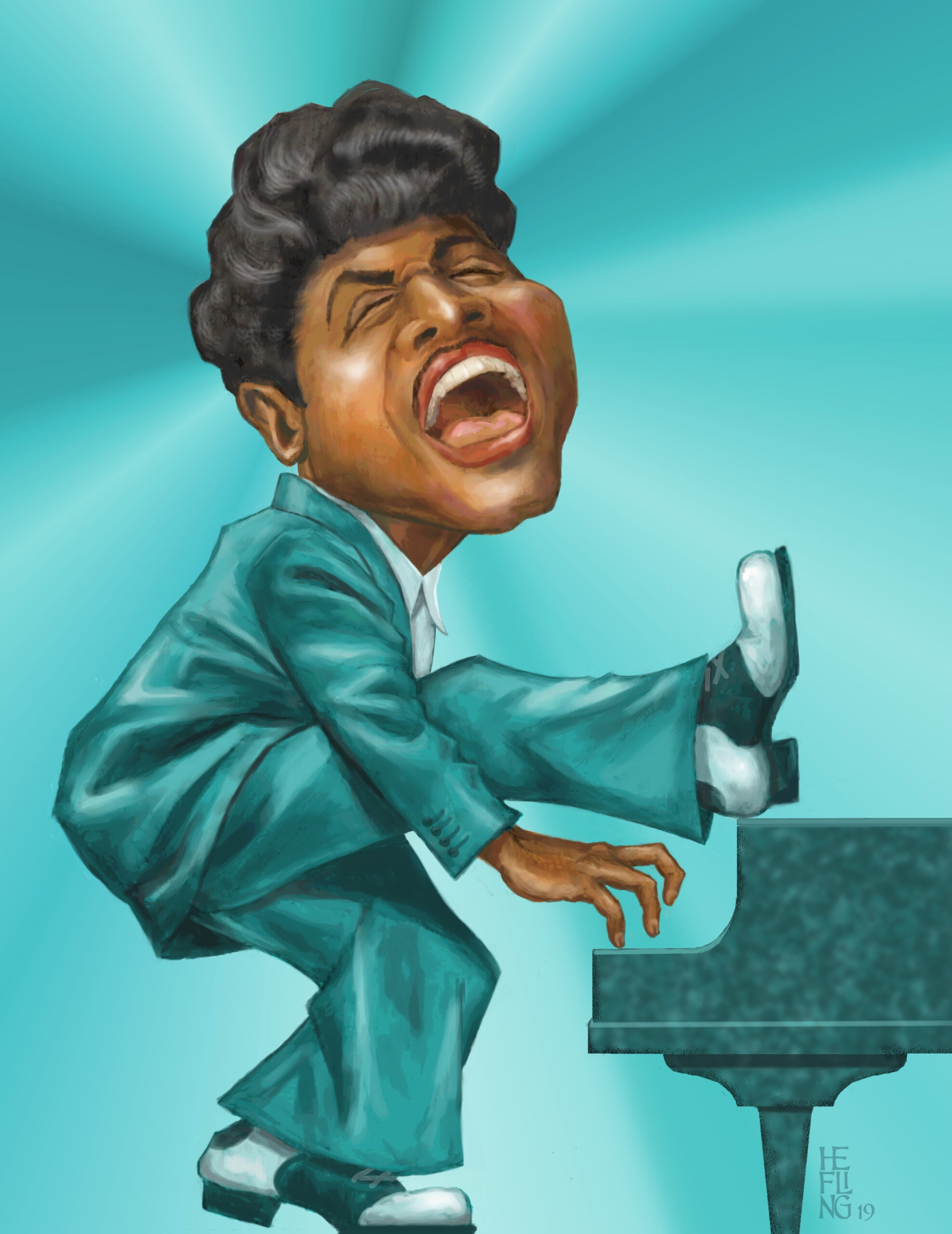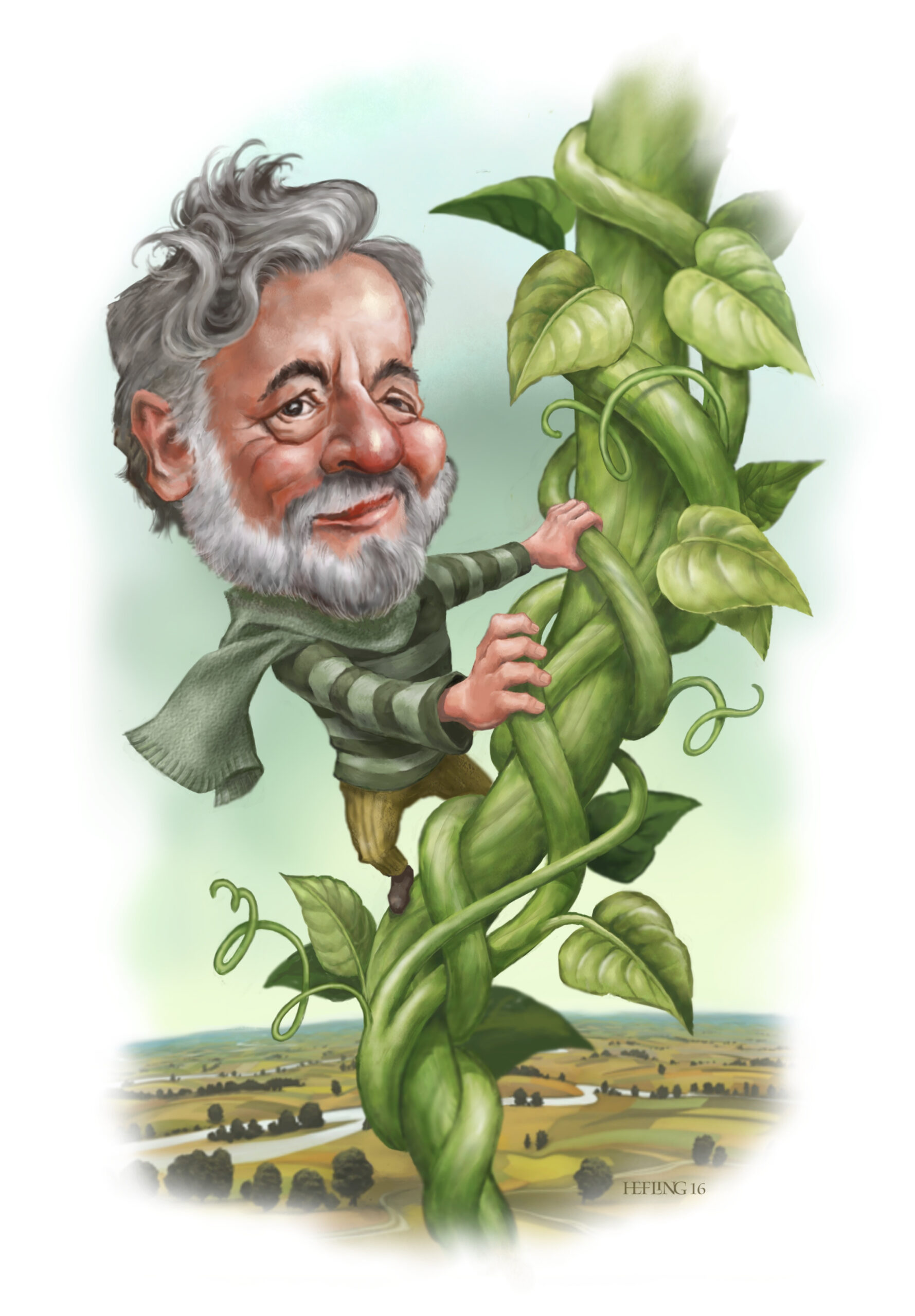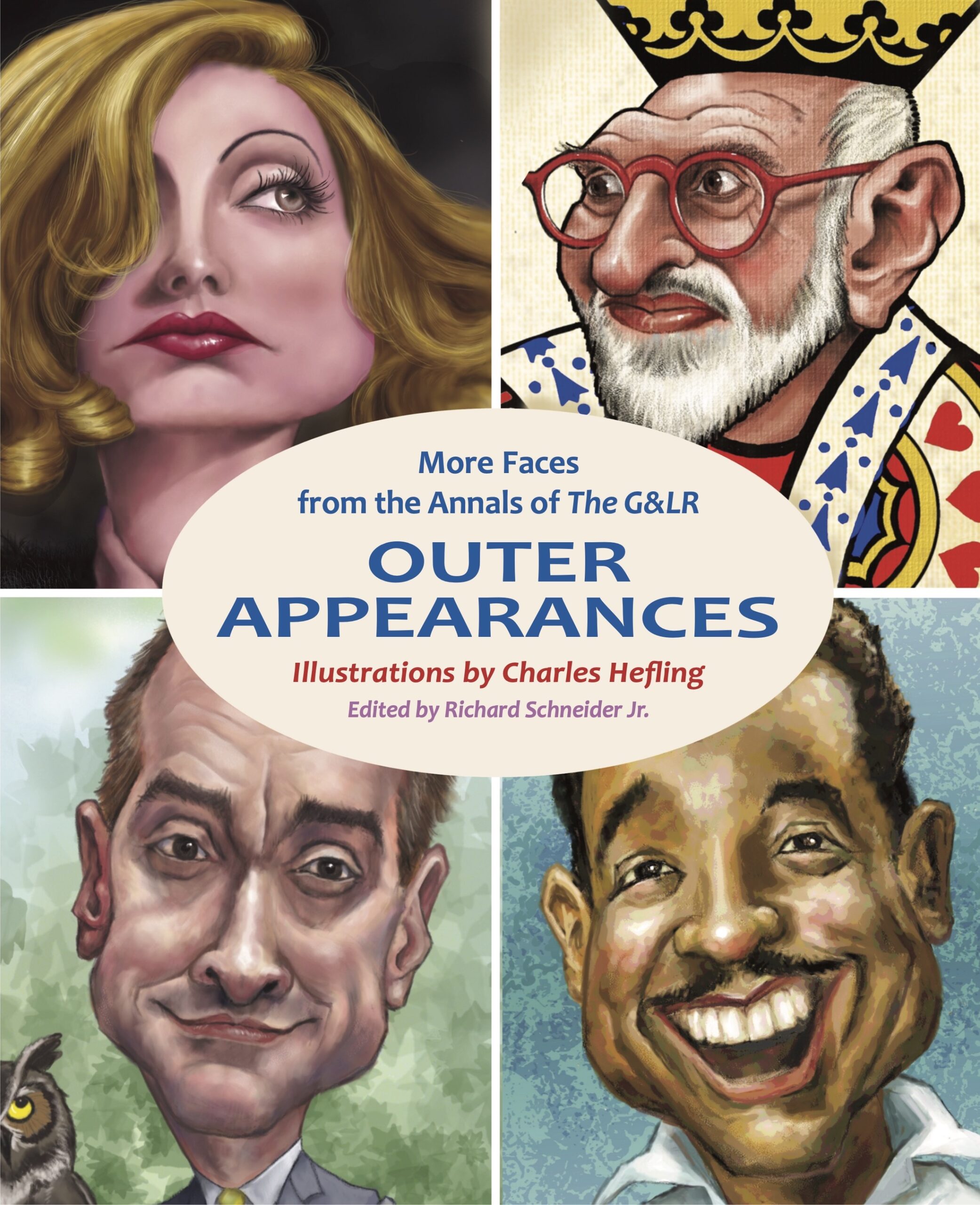Outer Appearances
Outer Appearances
More Faces from the Annals of The G&LR
Illustrations by Charles Hefling
A retrospective on the art of Charles Hefling
In celebration of the Thirtieth Anniversary of The G&LR
The Gay & Lesbian Review / WORLDWIDE
WHAT DOES IT MEAN for a magazine to hit the Big 3-0? For a person it usually means the end of youth and entry into dreaded adulthood, but for a niche-y, literate LGBT magazine, thirty years is beyond old age, a lifespan that no one would have predicted, least of all me, when the first issue of The Harvard Gay & Lesbian Review came out in Winter 1994.
But reaching a round number also means that we have some celebrating to do, and we’re doing it by replacing The G&LR’s January-February 2024 issue with this book, which is Volume II of an homage to the achievement of our Contributing Artist, Charles Hefling. What follows are 27 of his illustrations paired with excerpts from articles that ran in the magazine over the years.
The first volume was titled Casual Outings, and the title had a kind of double meaning: The artists and writers had in common that all were “in the closet,” as we would say, forced by circumstance to conceal their sexuality to some significant degree, so we were “outing” them by talking about their secret selves—but in a “casual” way, because their cover has long been blown for people like E. M. Forster, Frida Kahlo, or Federico García Lorca. The new book’s title, Outer Appearances, also has a double edge: The non-obvious meaning is that the people in this book are “outer”—more out—than those in Volume I.
The plan to produce two volumes was present from the start, guided by a rough division between the “high culture” and “popular” figures on Charles’ “A List.” Thus the first volume featured, for example, Franz Schubert, Franz Kafka, and Lorraine Hansberry, while this one includes Melissa Etheridge, David Sedaris, and Tom of Finland. There was no thought of dividing these folks according to their “outness,” but a general trend is unmistakable. It may just be that the “pop culture” people are more likely to be public figures whose private lives were simply harder to keep private. Even those who might have preferred to keep their
sexuality under wraps, such as Gore Vidal, Edward Albee, or Stephen Sondheim, were eventually outed by their own renown.
It’s also the case that the people in this book skew somewhat later historically than those in the first, with nine of them still alive today. This can be explained by the fact that pop culture as such is a fairly recent phenomenon. Some would trace it to the dance halls of the 1890s, but it was really the advent of the mass media that created “stars” in the modern sense. Actors like Cary Grant and Greta Garbo, pictured here, are early exemplars, but even writers like Gertrude Stein, Tennessee Williams, and Susan Sontag became celebrities in their own right.
While “outness” was not a criterion, it’s a concept that appears in both titles and points to a problem that unites all of these figures, an existential dilemma, if you will: the need to decide how to present, how to manage, one’s nonconforming sexual or gender identity. In Casual Outings, I noted a curious inversion whereby some figures (E. M. Forster, Langston Hughes, Edward Albee) lived fully gay lives but were loath to touch on homosexual themes in their work, while others (Walt Whitman, Marcel Proust, Mishima, John Cheever) freely explored such themes while concealing or denying their sexuality as a personal matter.
In this volume, the closet still has its place, but many more of the figures are openly or indeed outspokenly “queer.” In fact, for artists like Harvey Fierstein, Charles Ludlam, Edmund White, Keith Haring, Alison Bechdel, or Larry Kramer, being gay is what their work is all about. On the other hand, many LGBT artists have opted to write or perform for a “mainstream” audience and actively resisted the epithet “gay artist” or “gay writer” for fear of being marginalized (e.g., Susan Sontag, Stephen Sondheim, Edward Albee, even Gore Vidal). Albee made a point of denying that he was a “gay playwright,” insisting that he was a playwright who happened to be gay. Fair enough. Artists who’ve elected to focus primarily on the LGBT experience may find a ready market among this community of readers and spectators, but some have lamented the extent to which LGBT-oriented art and literature remain ghettoized, hard-pressed to find a mainstream audience (Brokeback Mountain notwithstanding).
My introduction to Volume I included a pæan to Charles Hefling’s artistry along with a brief history of his long association with this magazine. Rather than iterate these well-deserved plaudits, let me simply thank Charles yet again for his relentlessly brilliant contribution to The G&LR over many, many years.
AND A FOOTNOTE: The fact that we’re marking our 30th year can only mean that the Stonewall Riots happened 55 years ago. As luck would have it, The HGLR started publishing in the year of Stonewall’s 25th anniversary, 1994, so when we turned 25 in 2019, Stonewall was turning fifty, and we published a commemorative book titled In Search of Stonewall. So, to the Riots we say: Happy 55th!
RICHARD SCHNEIDER JR.
EDITOR-IN-CHIEF, THE G&LR





Contributors
ANDRE BAGOO’s latest books include The Undiscovered Country, The Dreaming, and Narcissus. He lives in Trinidad with his dog Chaplin.
DAVID BERGMAN, a professor of English at Towson University in Maryland, is the poetry editor for The G&LR.
ROSEMARY BOOTH, a regular contributor to The G&LR, is a writer and photographer based in Cambridge, Massachusetts.
WILLIAM BURTON, a frequent reviewer for The G&LR, is a writer based in Jensen Beach, FL.
RICHARD CANNING is author or editor of ten books, most recently of Brigid Brophy: Avant-Garde Writer, Critic, Activist. His critical life of Ronald Firbank is forthcoming from Harvard University Press.
COLIN CARMAN, who teaches British and American literature at Colorado Mesa University, is the author of The Radical Ecology of the Shelleys: Eros and Environment.
STEVEN F. DANSKY is an activist, documentarian, photographer, psychotherapist, and writer. A member of the Gay Liberation Front in the 1970s, he is the director of Outspoken: Oral Histories from LGBTQ Pioneers.
MARK DERY is a cultural critic, essayist, and author of four books. His most recent book is the biography Born to Be Posthumous: The Eccentric Life and Mysterious Genius of Edward Gorey.
ALLEN ELLENZWEIG, a longtime G&LR contributor, is the author of the recently published biography George Platt Lynes: The Daring Eye.
RAYMOND-JEAN FRONTAIN, professor of English at the University of Central Arkansas, is editor of the academic quarterly ANQ and author of The Theater of Terrence McNally: Something about Grace (2019).
CHARLES GREEN, a frequent reviewer for The G&LR, is a writer based in Annapolis, Maryland.
MATTHEW HAYS, co-editor of the “Queer Film Classics” book series, teaches film studies and journalism at Concordia University in Montréal.
IRENE JAVORS, a frequent contributor to The G&LR, lives and works in New York City.
JOHN R. KILLACKY, who lives in Vermont, is the author of Because Art: Commentary, Critique, & Conversation (2021).
DAVID LAFONTAINE, a professor in the English Dept. at Massasoit Community College in Massachusetts, has written several articles on music topics for The G&LR.
MARTHA MILLER, whose latest novel is titled Me Inside, is a Midwestern writer of plays, fiction, reviews, and other nonfiction.
JEAN E. MILLS teaches English at Hunter College in New York City.
BONNIE J. MORRIS teaches LGBTQ history and the history of the women’s music movement at UC-Berkeley. The author of 19 books, including The Disappearing L, she is the archivist for Olivia Records.
JIM NAWROCKI (1964–2019), poet and writer, was a regular contributor to The G&LR for many years and also wrote for The Bay Area Reporter in San Francisco, the bimonthly New Art Examiner, and other periodicals.
FELICE PICANO’s latest book is titled Six Strange Stories and an Essay about H.P. Lovecraft (Cyberwit.net).
JACK PORTER is an associate professor at the Davis Center for Russian and Eurasian Studies at Harvard University.
TERRI SCHLICHENMEYER, a frequent reviewer for The G&LR, is a freelance writer based in Wisconsin.
RICHARD SCHNEIDER JR. is the founder and editor-in-chief of The Gay & Lesbian Review / Worldwide.
MICHAEL SCHWARTZ is an associate editor of, and longtime contributor to, The Gay & Lesbian Review.
ELIZABETH STEPHENS is associate professor of cultural studies at the University of Queensland in Australia.
MARTHA E. STONE, the literary editor of The G&LR since its founding in 1994, has contributed to almost all of its 166 issues.


